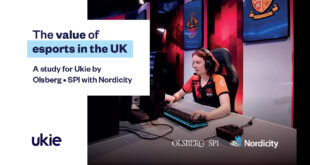For the first entry in our continuing coverage of the eSports market, MCV looks back at the growth of competitive gaming and sees where it could be headed in years to come
Multiplayer gaming has come on leaps and bounds since the days of head-to-head face-offs on arcade cabinets.
Events originally took the form of High Score challenges, such as Atari’s Space Invaders Tournament in 1980, which attracted more than 10,000 competitors.
The popularity of competitive events was then catalysed in the 1990s by the boom in PC games including StarCraft and Quake.
STEPPING UP THE GAME
As the presence of professional gaming grew, a number of organisations emerged attempting to take the sector to a wider world stage. These included Major League Gaming (MLG), which was established in 2002.
Shooters such as Counter-Strike and Call of Duty have remained popular choices for those seeking competitive gaming, while fighting titles like Street Fighter and Marvel vs Capcom have found their own eSports home in the Evolution Champion Series – or ‘Evo’.
Matt MacDonald, senior eSports manager at Multiplay, says of the UK sector: “Right now, Counter-Strike: Global Offensive is the dominant eSport in the UK in terms of both viewership and participants. Call of Duty also seems to be doing incredibly well in terms of console gaming.”
Despite the popularity of shooters, it is actually a relative newcomer to the sector – the MOBA (Multiplayer Online Battle Arena) genre – that currently holds the eSports crown.
2009 title League of Legends boasted more than 27 million players daily as of last January, according to developer Riot Games, with in excess of 11 million people simultaneously watching the 2014 LoL World Championship event.
Fellow MOBA Dota 2 has also boomed in popularity since its official 2013 launch, now seeing more than 800,000 concurrent users on the Steam platform.
The exclusivity of these two titles has also meant that PC remains the top choice for pro-gamers.
“Right now, Counter-Strike: Global Offensive is the dominant eSport in the UK in terms of both viewership and participants.”
Matt MacDonald, Multiplay
LIVE AND KICKING
As audience numbers have grown, so has the money on offer for the best players – and event hosts.
Valve’s annual tournament for Dota 2, The International, saw its prize pool explode from $2.9 million in 2013 to a staggering $10.9 million last year – making 2014’s instalment the biggest eSports event to date.
The birth of live streaming through services such as Twitch has opened the accessibility of eSports.
“Twitch has boosted the entire scene for everyone and created probably the first sport to be successful outside of traditional media,” explains Michael ‘ODEE’ O’Dell, manager of UK eSports group Team Dignitas.
71.5 million people watched pro-gaming in 2014, according to Red Bull, with viewers watching just over two hours at a time on average. Mainstream broadcaster ESPN showed 2014 finals of The International live – the first such time an eSports competition had been broadcast on TV.

 MCV/DEVELOP News, events, research and jobs from the games industry
MCV/DEVELOP News, events, research and jobs from the games industry



